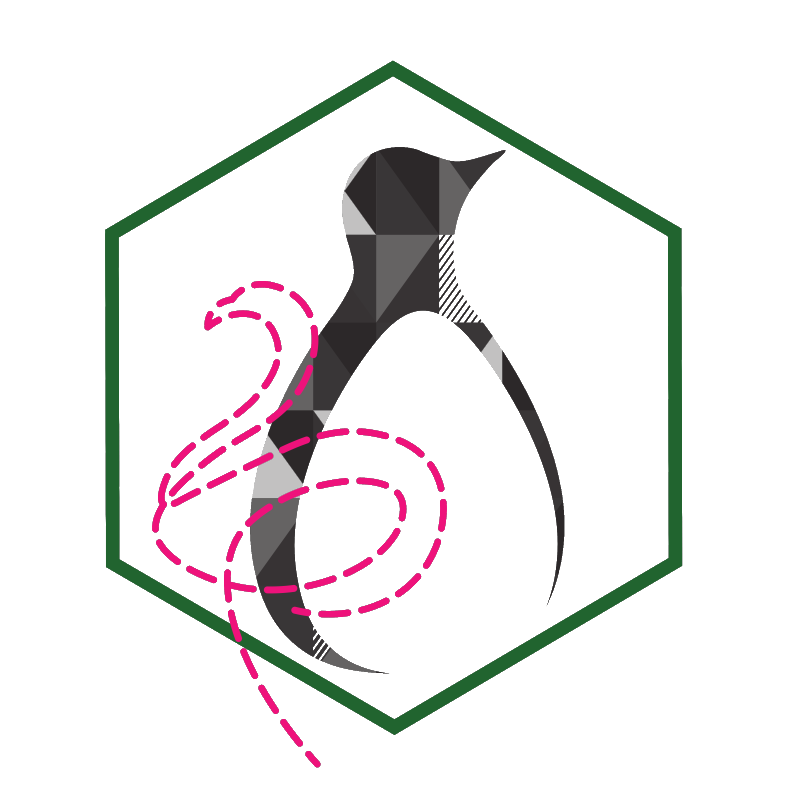Picking and Cutting Fabrics
Everything about the kits and the giveaway is written at the end of the article.
For me, this is always the best part of a new quilt, the planning phase. Here I can as creativ as possible. But as all creative people know, a lot can go wrong at this stage, so I want to give you a bit of a hand.
Each block is made out of four strips. Depending on whether you sew using the first or second method, you always have five blocks in which the order of the stripes is the same (method 2) or you have all the strips mixed together (method 1). The decision, which method you want to use, should be taken into account, when choosing your fabric. Important is, that if you sew using method 2, where you get five fairly equal blocks, you need fabric with a usable width of 42.5″. Be sure to measure it. If you pre-wash your fabrics, you must have this width AFTER washing, otherwise you will need more fabric or strips than listet in the pattern.
Precuts or fabric by the meter
Precuts are available in a wide variety of versions on the market and can be very practical depending on the pattern. “UnRoll” is designed for precuts. So-called “jelly rolls” and fat quarters are particularly suitable for this pattern. Here again, it is important which method you want to sew.
If you want to sew using method 2, jelly rolls are the precuts you want to use. These are strips of a complete series of fabric measuring 2.5″ wide to the full width of the fabric. Here again, it is important that you have a usable width of at least 42.5″. Some jelly rolls are shorter, so you’ll need more strips than shown in the pattern.
You can also sew the pattern with fat quarters. But then you have to choose Method 1 when sewing your blocks. One Fat Quater gives you 16 strips, so for a sofa/bedroom quilt you need 12 Fat Quaters. With the Fat Quaters you usually get a bundle of all the fabrics included in a fabric series. Here, however, the fabric pieces are a little larger (18″x22″)
If you decide to buy fabric by the meter, you either have to buy a lot of fabric, as most retailers no longer cut less than half a meter, or you are a little more limited in the variation of the stripes. I then recommend designing all blocks the same. This can also look very nice. Here you can choose the method of block production.
Coloring, color placement and block arrangement
The easiest way is to choose four colors and use them in the same order for all blocks. You can either use an ombré effect or mix the colors colorfully. (good if you want to buy fabric by the meter)
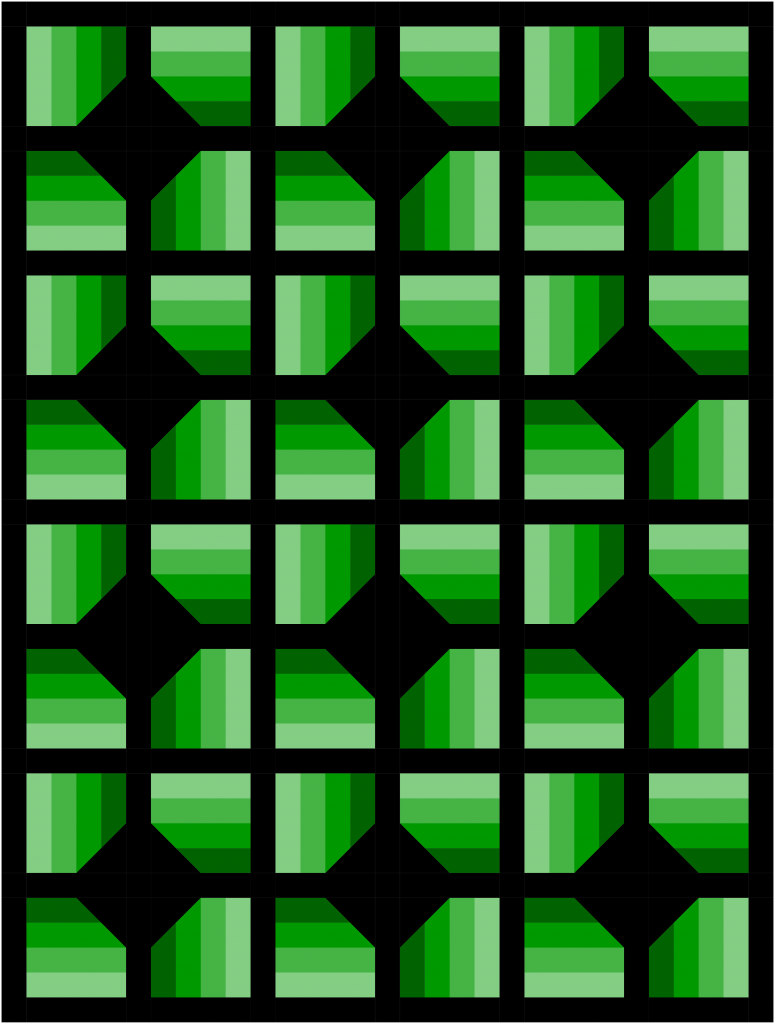
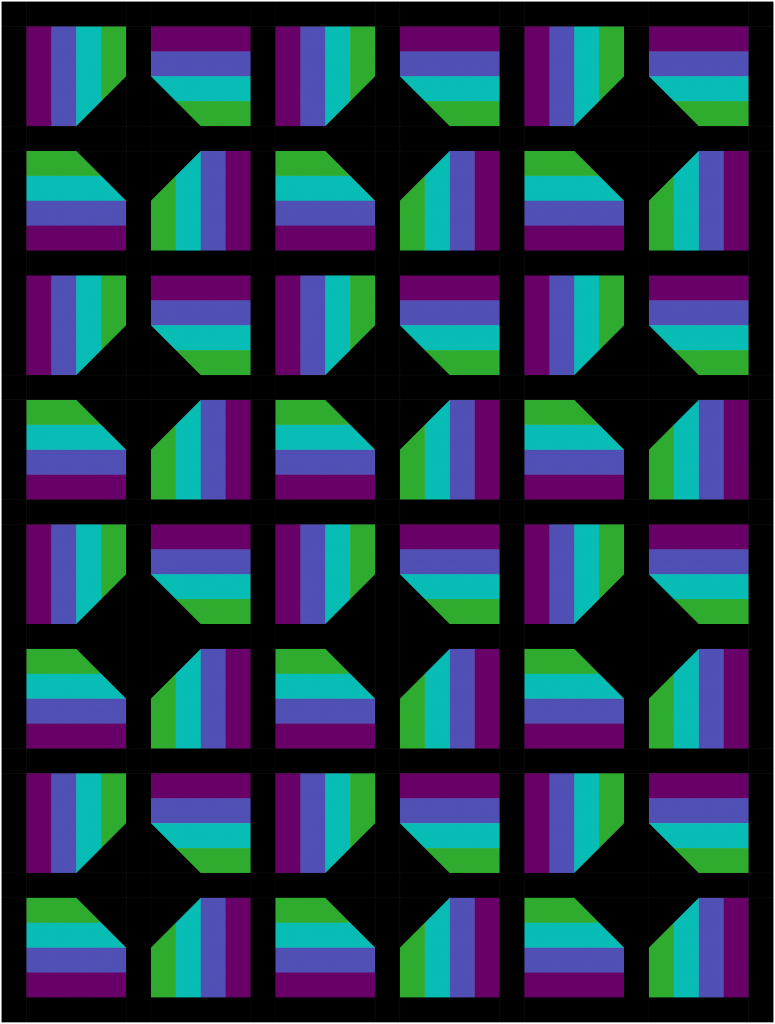
Ombré effect
mixed up
Especially with the ombré effect, beautiful effects can be achieved if you choose the “tulip” version and then alternately place the light stripes inside and outside, as shown in the pattern.
You can now not only choose a color gradient within a block, but also distribute it across the entire quilt. You have to think about the following things (here as an example for a sofa/bedroom quilt):
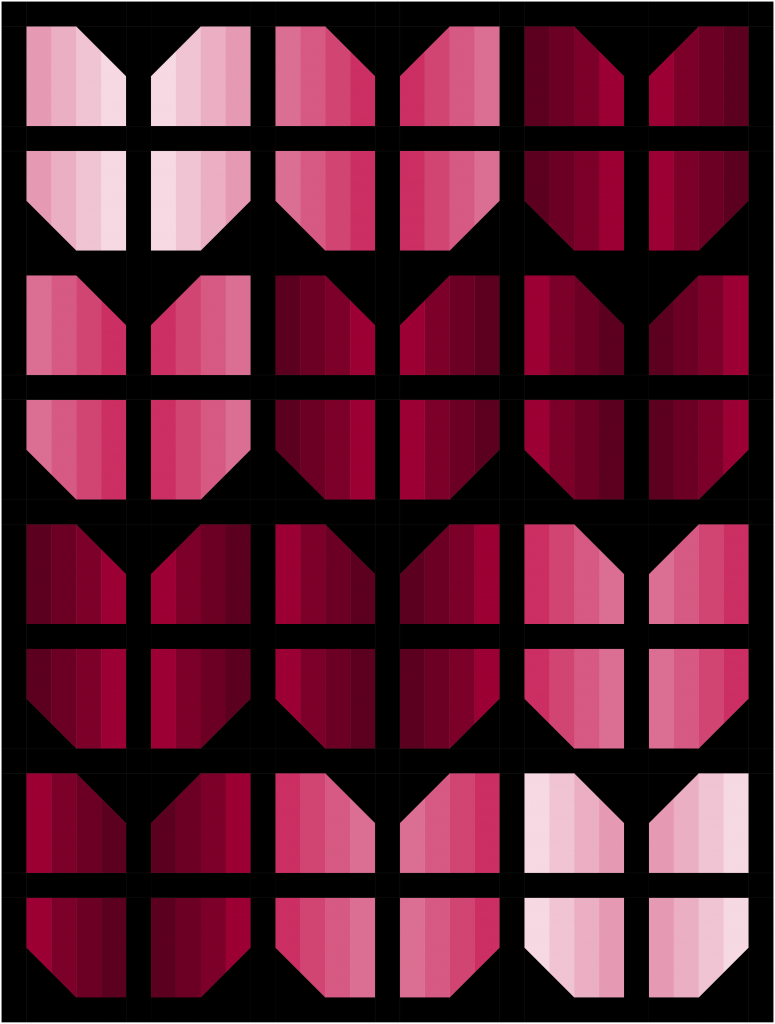
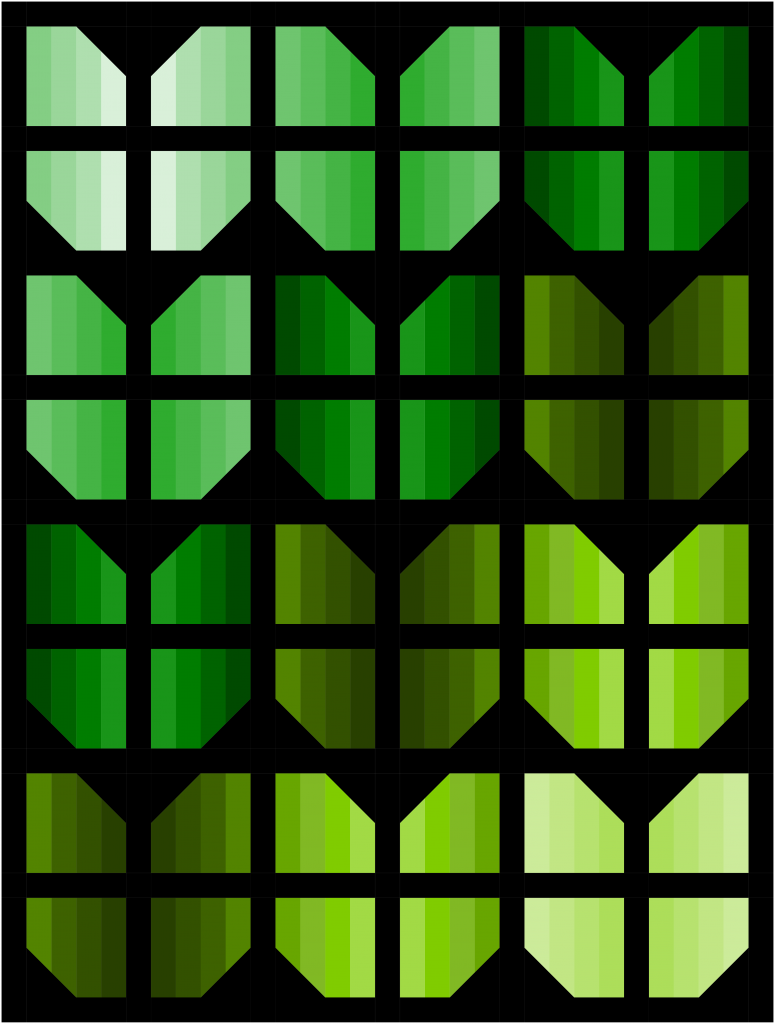
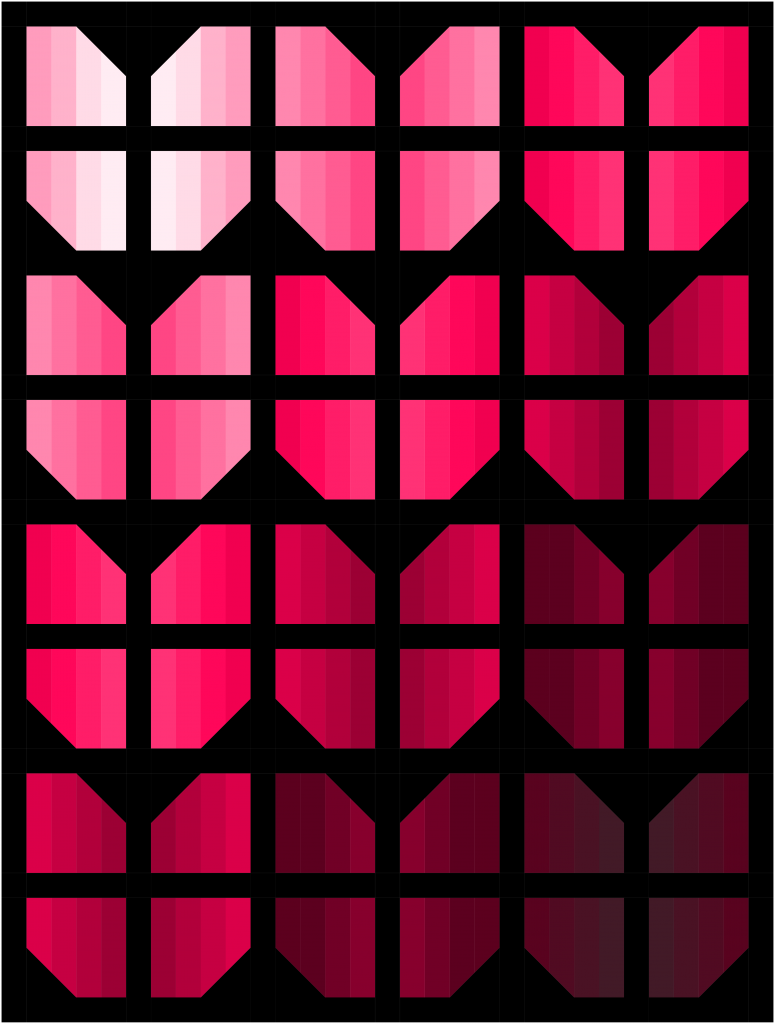
If you want a color gradient that is reflected in the middle, choose 12 shades of the same color.
If you want a color gradient from one color to an adjacent one (note the color wheel), you choose 12 shades of each of the two adjacent colors.
If you want a color gradient from light to dark across the entire quilt, choose 24 shades of the same color.
Of course, you can not only play with plain fabrics, but also with fabrics from an entire series, such as those we find in a Jelly Roll or a Fat Quater Bundle. (Of course you can also play with all other materials, but that would go beyond the scope here).
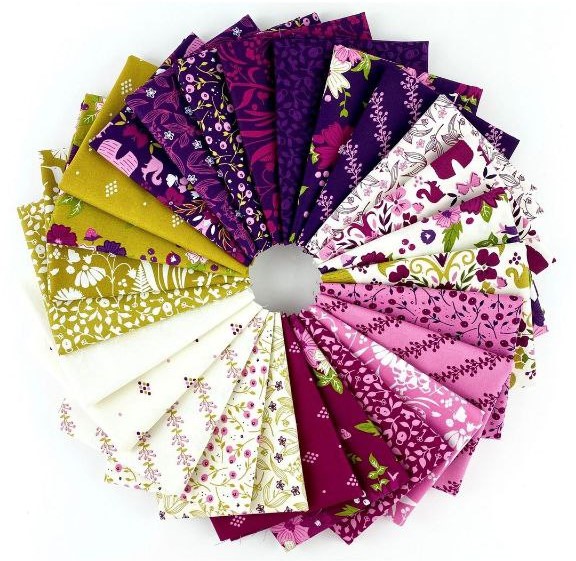
Here you also think about the color placement, because many fabric series consist of more than one colorway. Let’s take the series I chose for my SAL quilt, “Wild Meadow” from Moda Fabrics, as an example. There are five colorways in this series: white, ochre, pink, berry and eggplant. These are not evenly distributed across the series, but there are more of some and less of others. In addition, not all substances are contained equally in a jelly roll.
How to plan the quilt with a jelly roll
First of all, you make a very rough plan. This means you grab your coloring sheet, take the version (stripes, tulip, pinwheel, etc.) that you like best and have fun coloring it. For me it looked like this:
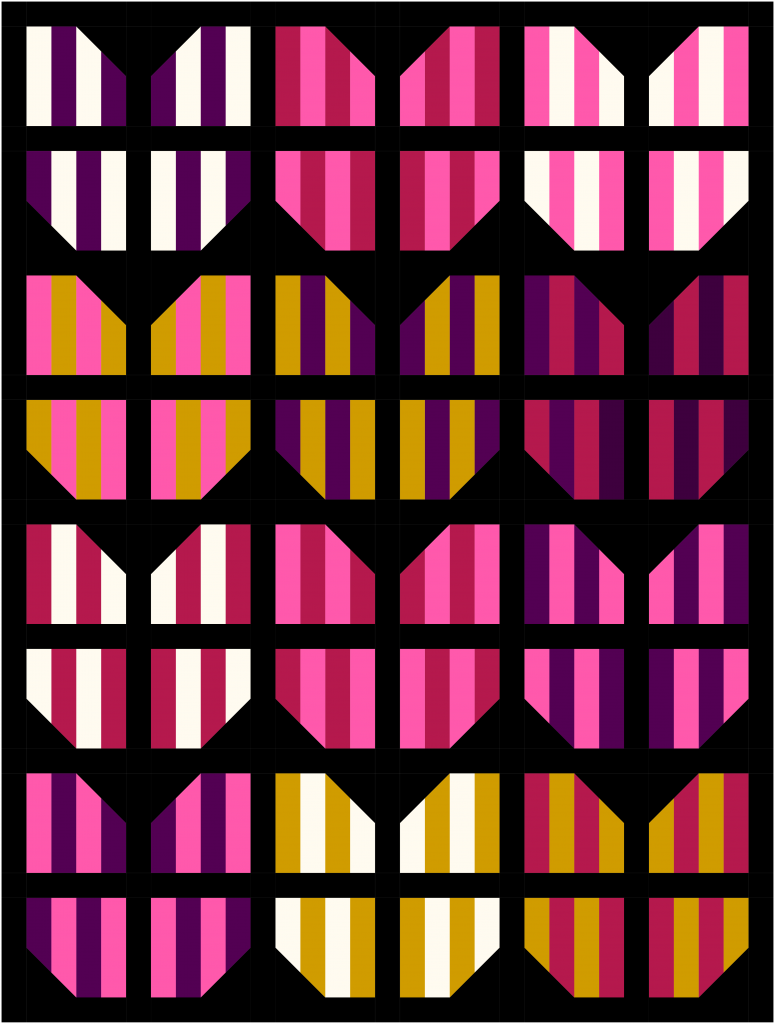
I found the tulips (here they could also be butterflies) particularly beautiful for this fabric series. I wanted something a little more unusual and that’s why I chose the striped pattern.
I thought the stripe pattern was fantastic and that’s why I looked at it again in the other versions (except stripes, which I’ve already sewn).
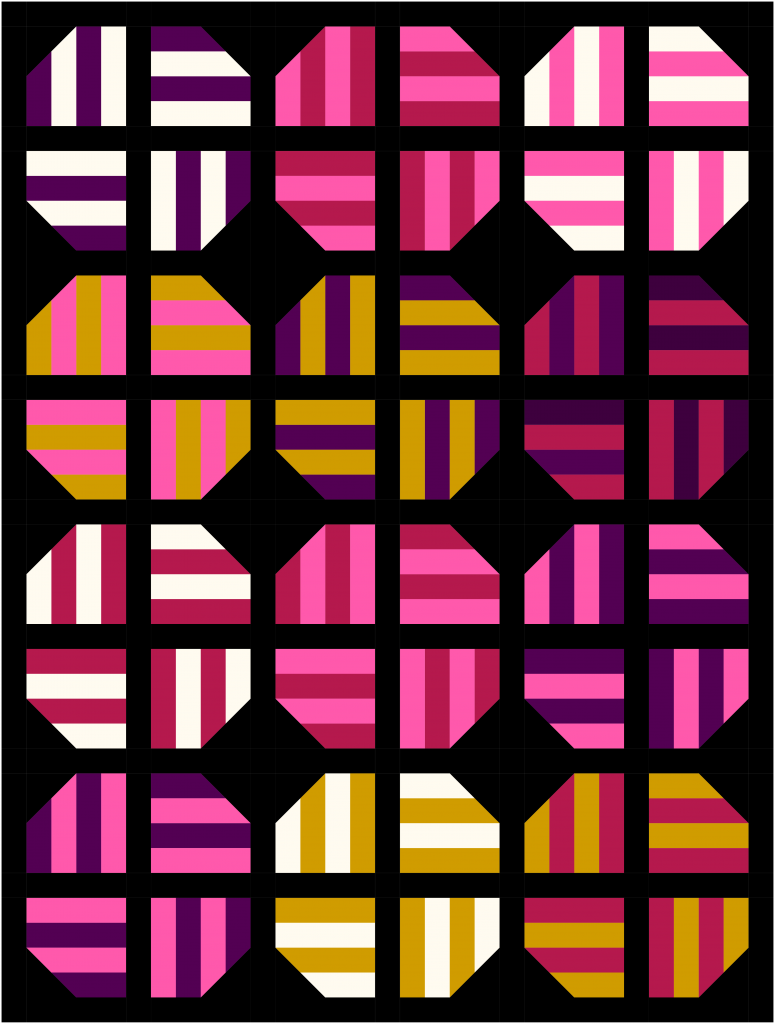
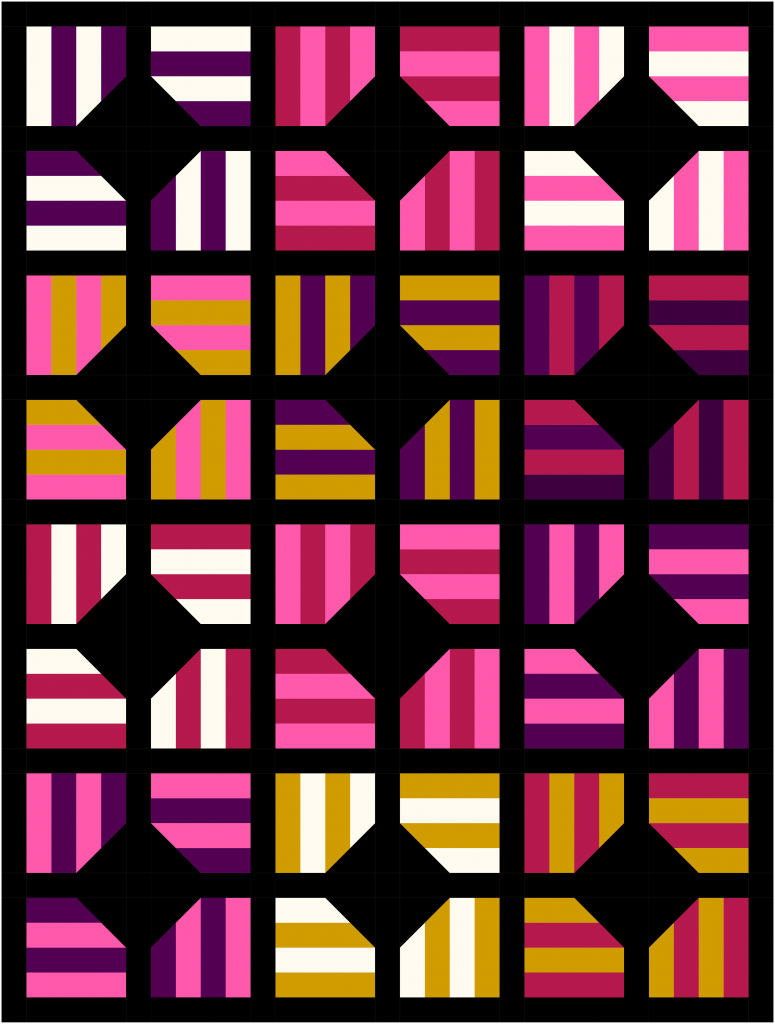
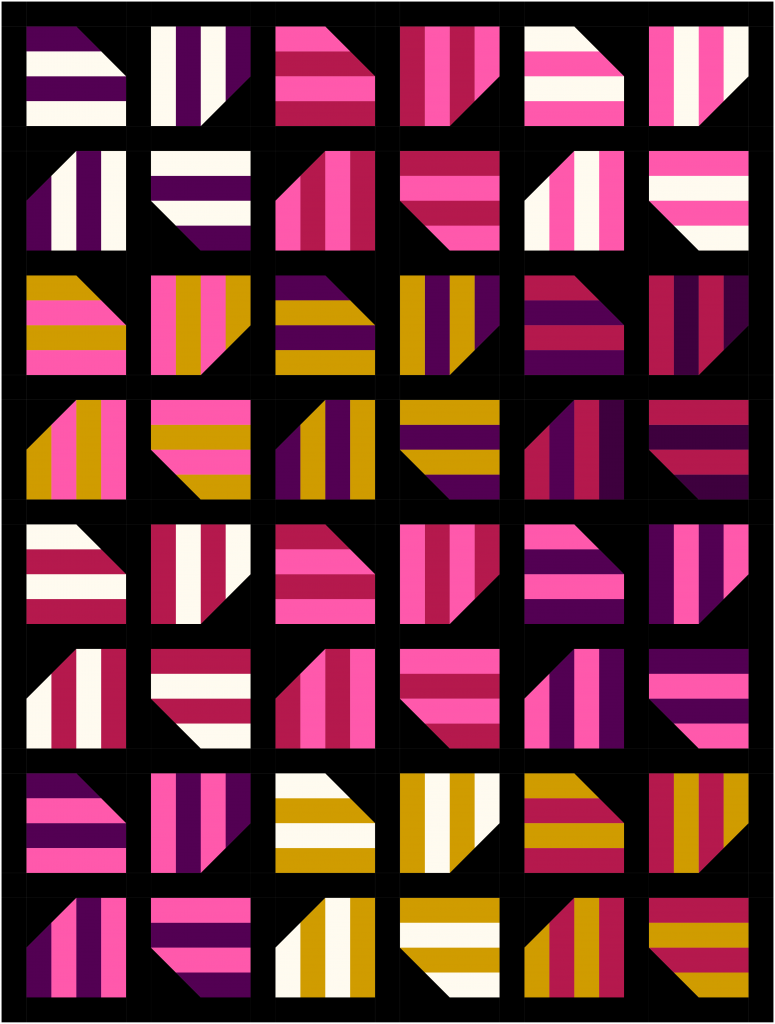
They’re all chic, but I liked the tulips best.
Well, in the next step you look at the extent to which your plan can be realized. You should make the following considerations:
- Which method do you want to sew with (small lots of strips or the long jelly roll strips into blocks)?
- Is the method feasible with your plan?
- How many stripes of what color do you have and how many stripes of what color would you need to realize your plan?
- How can you change your plan to make it work?
First of all, I should consider which method I would like to use to sew my quilt. Since I have a jelly roll, I would of course like to choose method 2, in which I sew the strips together and then cut the blocks from them. Unfortunately, the method cannot be implemented with my plan because I always have four or eight identical blocks, but method 2 always results in five identical blocks. So this is not the right one for me, so I will sew my quilt using method 1, in which you sew short strips together to form blocks.
For the next consideration I had to count my jelly roll strips. Since I want to arrange my stripes by color and not by pattern, I counted the same way:
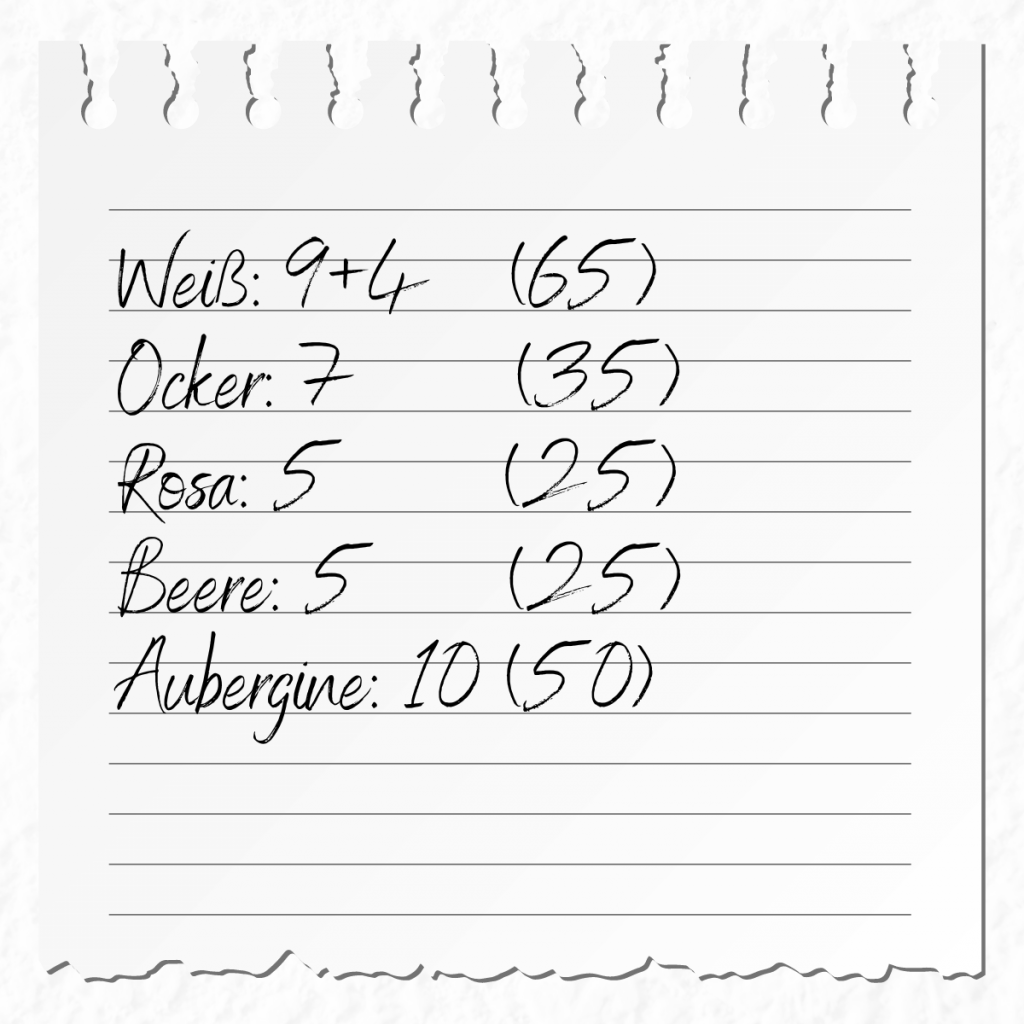
(the front number corresponds to the long strips, the number in brackets corresponds to the amount of strips I get when cutting)
Next I had to count the strips in my plan and then compare them to the values above. It turned out that I only distributed the ocher stripes in the right amount, but that I had too many pink and berry stripes in the quilt and too few white and aubergine stripes.
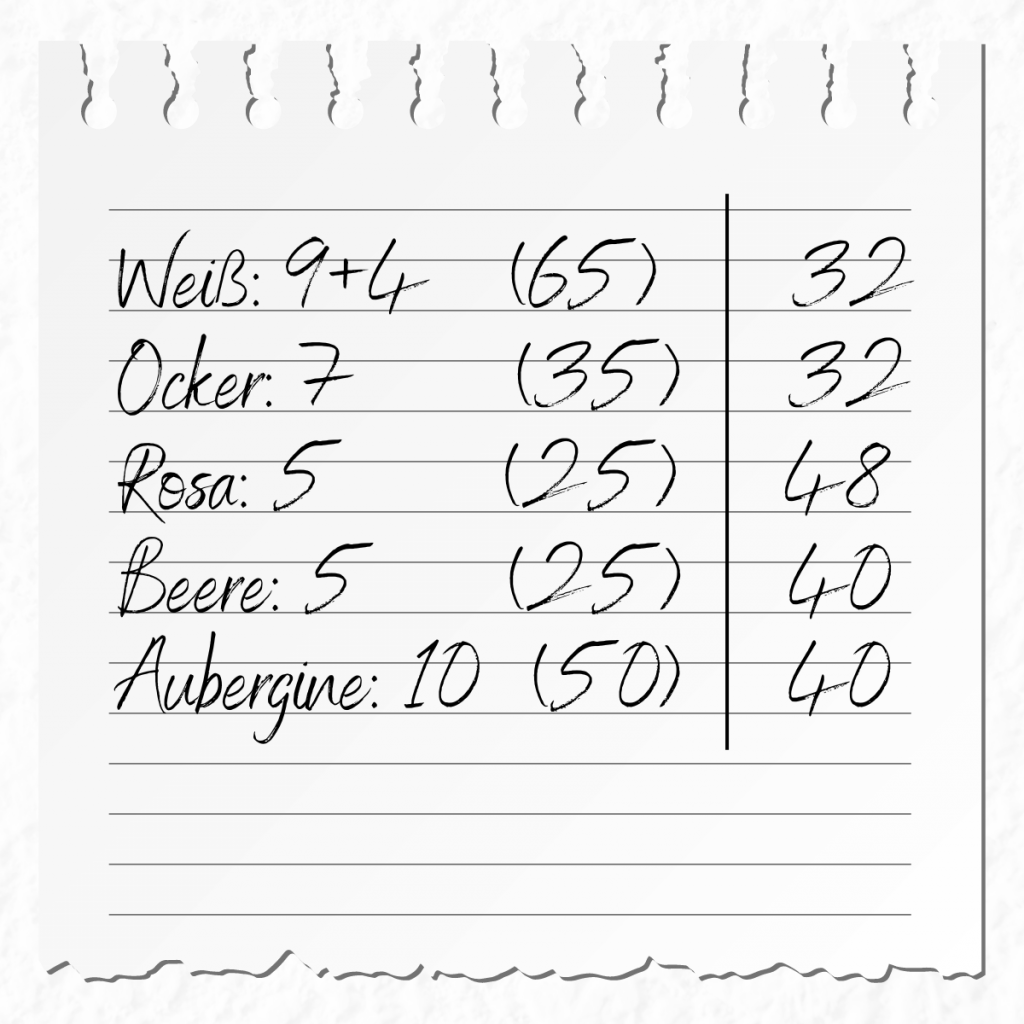
So I adjusted my plan based on the considerations mentioned above, changed the order of the colors slightly and came to the following result.
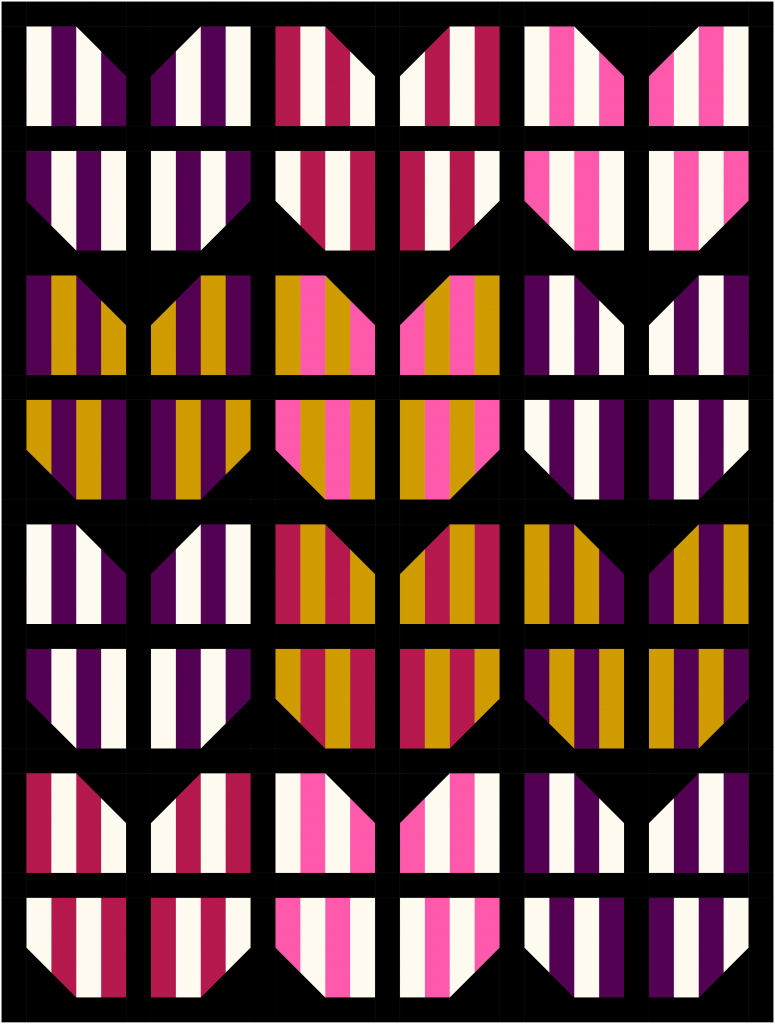
If all these considerations are too much for you and you just want to start sewing, you can also simply sew a scrapy version (or buy a kit – see below). The best way to do this is to choose method 1 (the one with the short stripes), cut the required number of strips as described in the pattern, mix them well and simply sew them together as you like.
Kits and Giveaway
Alternatively, you can also order a great kit from lovely Helen from Floyd the Fox. The two color variants
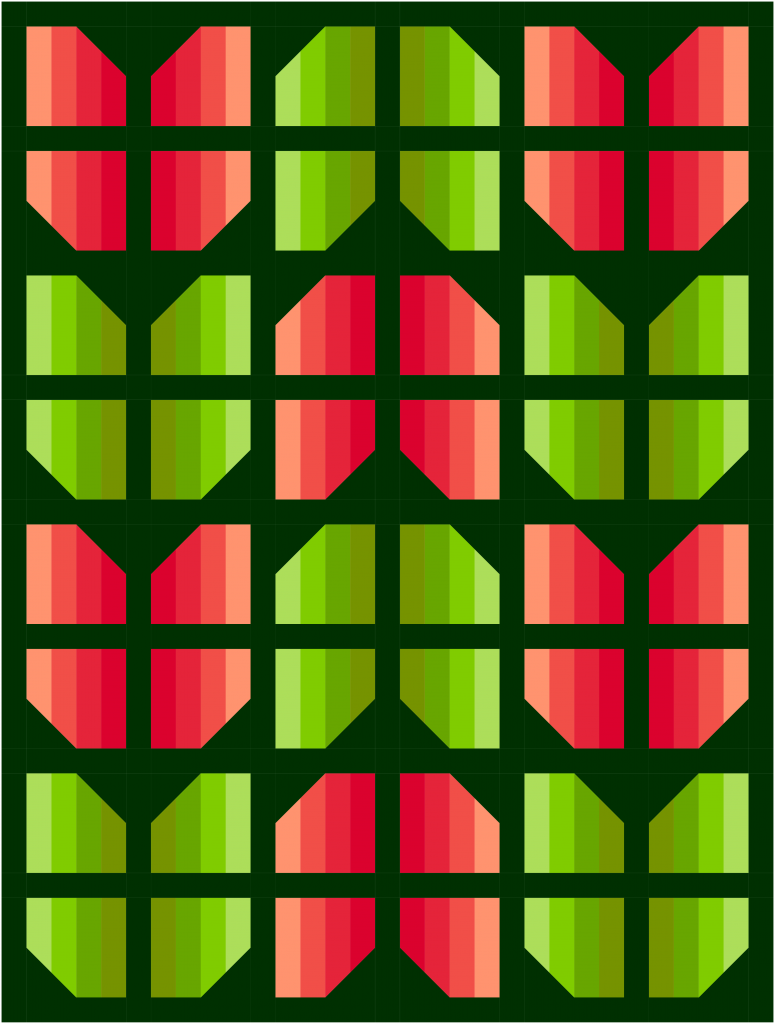
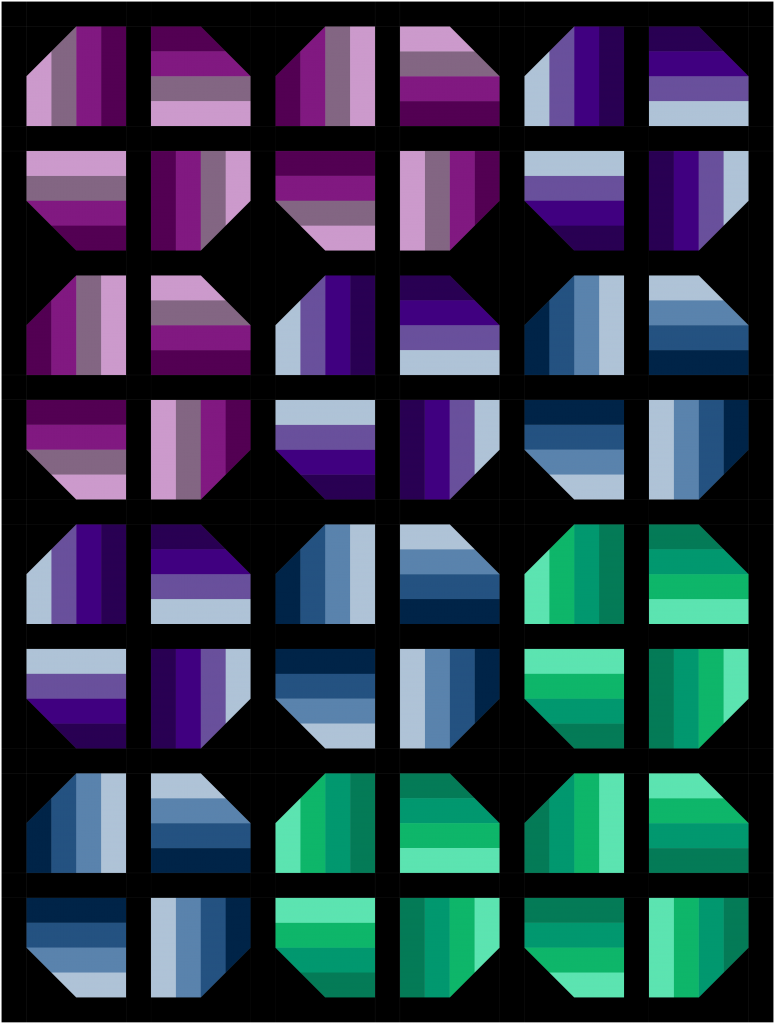
Garden
Mermaid
I have designed for you and will be lovingly packed by her in the sofa/bedroom size.
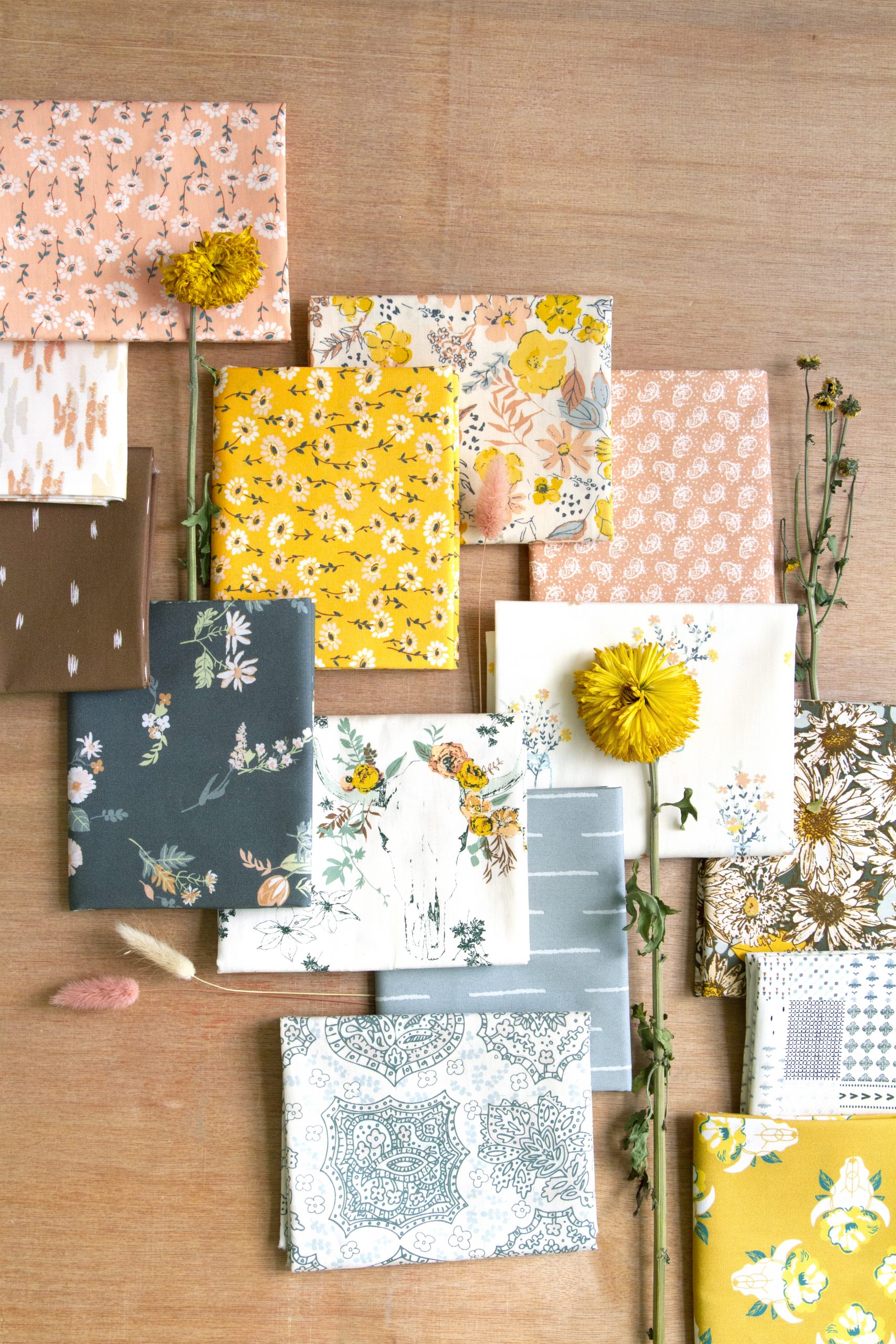
Lovely Alexandra from Quilt und Patchworkstudio will put together completely individual kits for you. Just talk to her and tell her what you have in mind and you’ll definitely find something great. She also got some great Balli Pops fresh into the store especially for the Sew A Long. You can take full advantage of it.
If you would rather work with a jelly roll, I can highly recommend the Shop BlueBetti Patchwork and more from Bettina. She has many beautiful jelly rolls in her range and is happy to answer any questions you may have.
To enter the giveaway in Week 2 and Week 4 to win either a Bella Solids Fat Quater Bundle from BettiBlue or a Half Yard Bundle “Shine On” von Art Gallery Fabrics you must post your progress on Instagram every week. You must definitely tag your post with @fingingo.pumpuin , #sewalongunroll and #unrollquilt and like and comment on my post from the start of the week, also follow BlueBetti and ArtGalleryFabrics .
